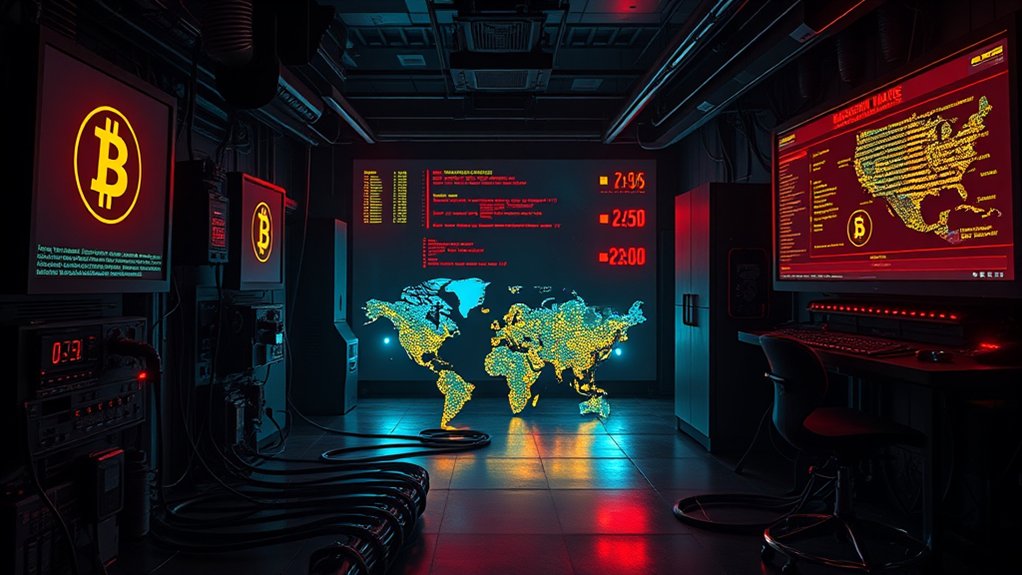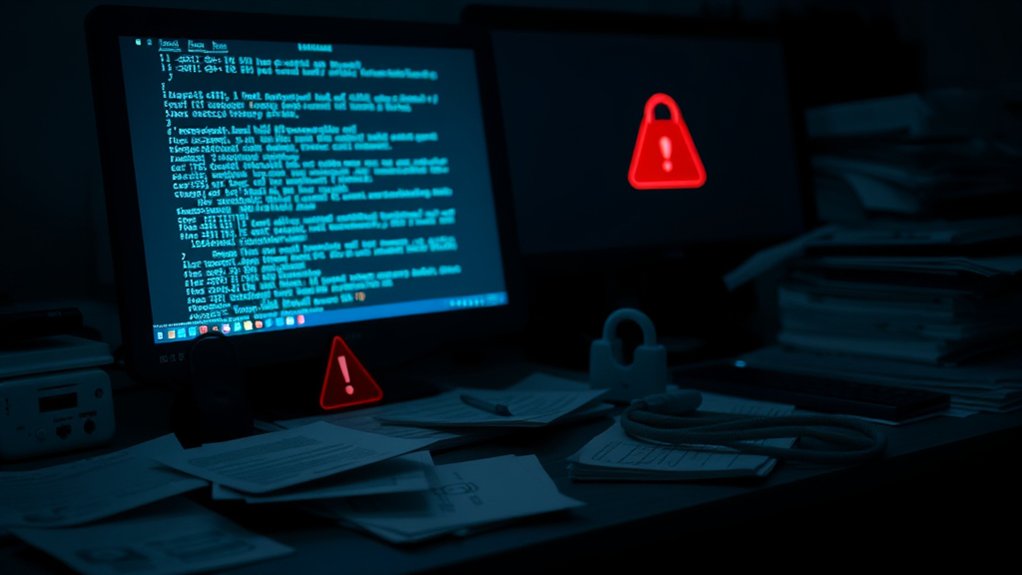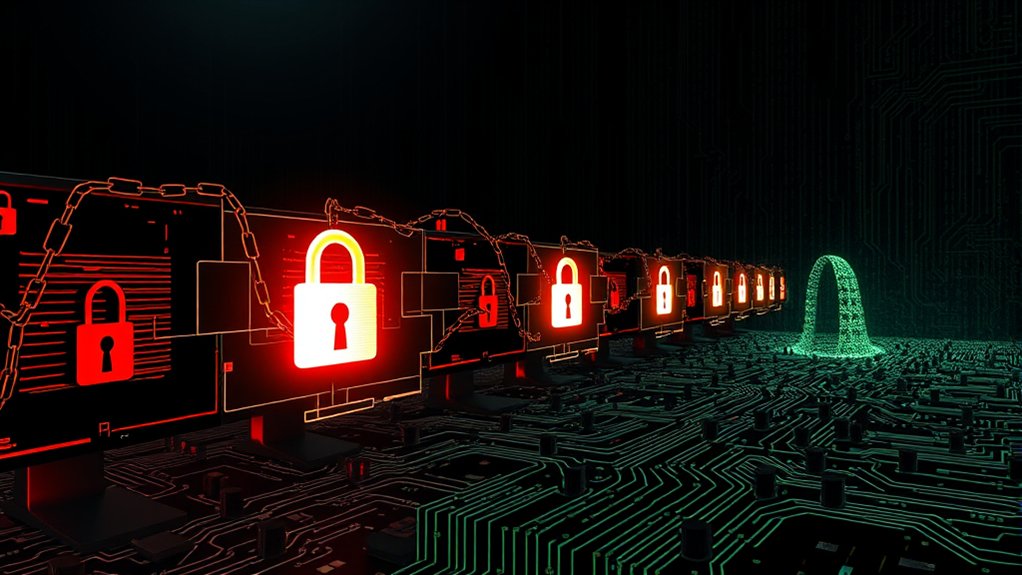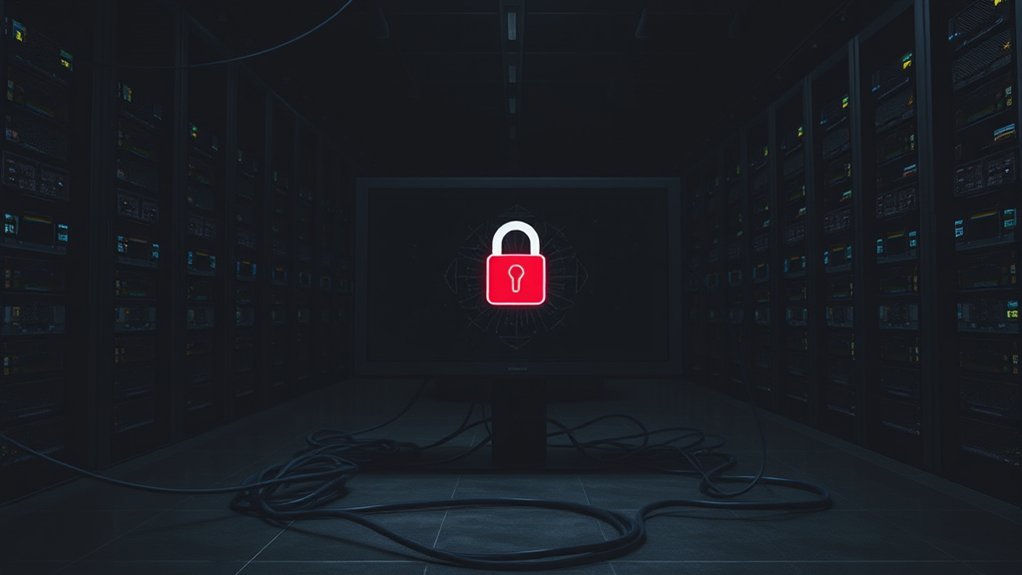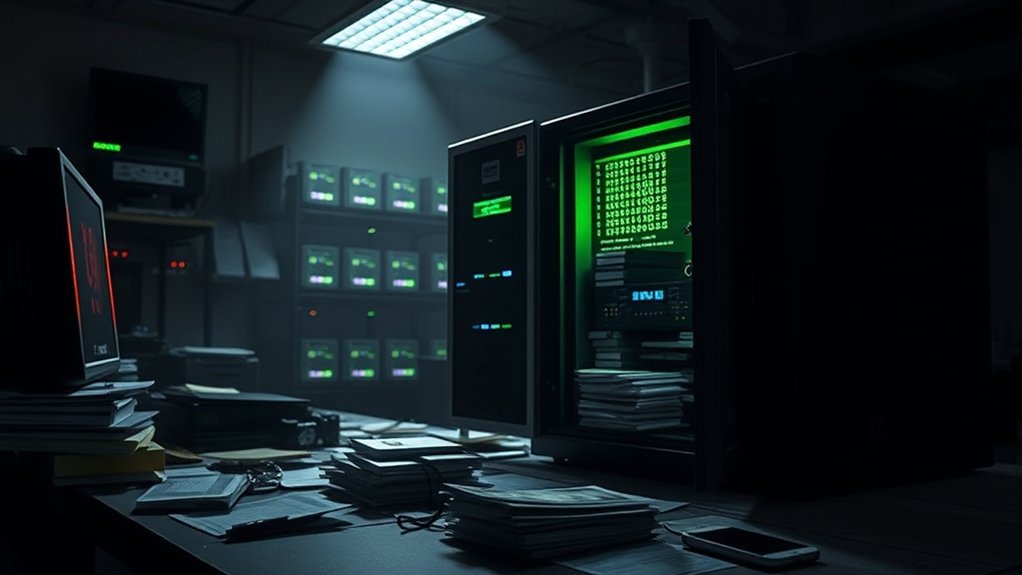Ransomware attacks have surged dramatically, exhibiting a staggering 46% increase in the first quarter of 2025 compared to the previous quarter, particularly targeting industrial operators. This escalation indicates a disturbing trend, with ransomware incidents in this period accounting for 40% of the expected total for the year. The energy and manufacturing sectors, both crucial to economic stability, have emerged as frequent targets because of their critical operational roles. The U.S. ransomware attacks increased by nearly 150% from early 2024 to the start of 2025, signaling a shift in the threat landscape.
Ransomware incidents surged 46% in early 2025, particularly targeting critical energy and manufacturing sectors vital to economic stability.
The sophistication of these attacks highlights pressing cybersecurity challenges. Malware and specific trojans designed to steal credentials have seen significant increases, with attackers utilizing ransomware-as-a-service kits. Such technology empowers a broader range of cybercriminals to compromise industrial operations, raising concerns among cybersecurity experts regarding the vulnerability of Operational Technology (OT) systems. These systems are essential for maintaining continuous operations, making them especially attractive to ransomware attackers. Credential-stealing trojans have particularly seen a spike of 3,000%, emphasizing the evolving threat landscape. Zero-day exploits remain a critical concern as they can go undetected until significant damage occurs.
In 2023, 59% of organizations experienced ransomware incidents, contributing to an average of 4,000 daily attacks globally. The United States, in particular, bore the brunt of this trend, accounting for 47% of all incidents that year. Significantly, U.S. ransomware attacks rose by 149% early in 2025, with data leak sites reflecting an increase in the number of victims.
The economic impact is marked; unplanned downtimes resulting from such attacks are estimated to cost Fortune 500 companies approximately $1.5 trillion annually.
The implications of these attacks extend beyond immediate financial loss. Operational disruptions in critical sectors not only impede economic activities but also pose substantial risks to information integrity and data security.
Organizations now face escalating pressure to improve their cybersecurity measures and develop strong continuity planning, strategically prioritizing these initiatives to mitigate the severe impacts of ransomware. As the threat environment evolves, maintaining security in industrial sectors will demand ongoing vigilance and adaptability from all stakeholders involved.
